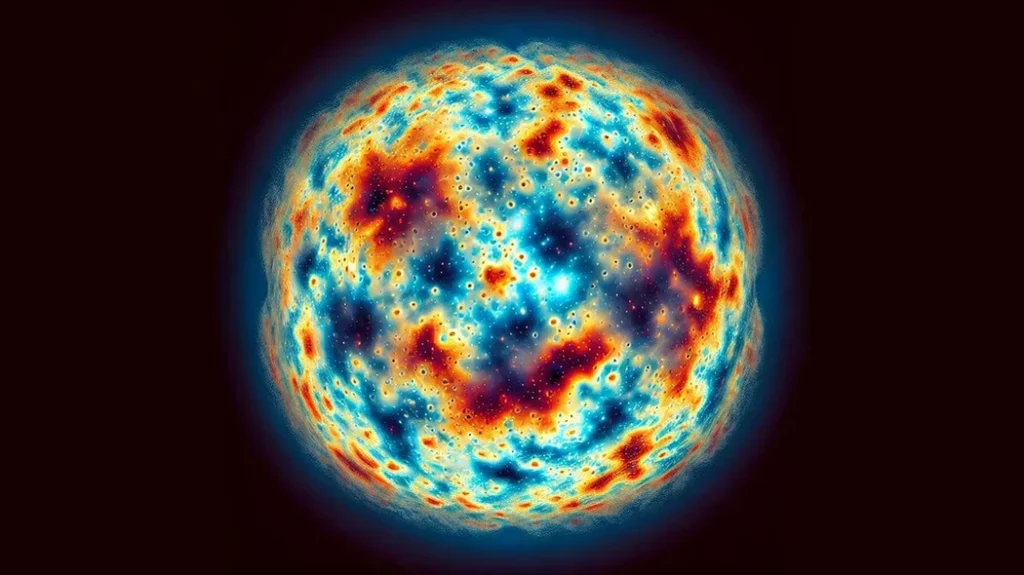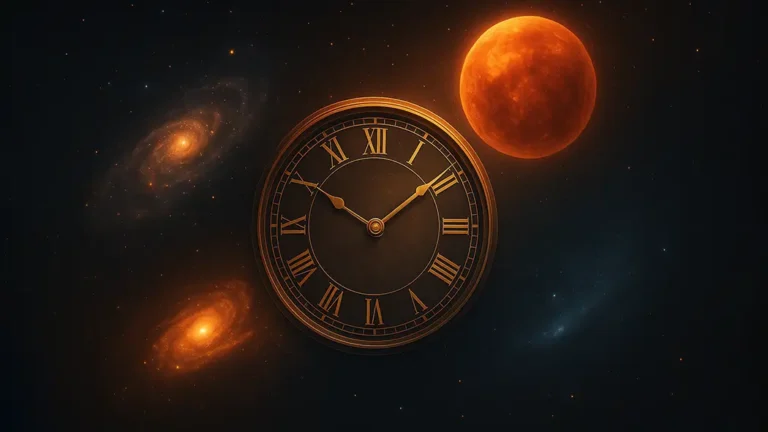A hundred years ago, scientists and philosophers believed that the universe was static, infinite, and eternal. This view was held by famous figures like Isaac Newton. They thought the universe had no beginning or end and that it had always existed like that. But modern science has completely changed this view. Today, we know that the universe is about 13.8 billion years old.
So, how do we know how old the universe is? How did scientists find out this huge number? After all, there is no cosmic calendar in space that marks the date the universe began.
Here’s How We Know How Old the Universe Is
In the absence of a cosmic calendar, scientists had to use other ways to work out the age of the universe. There are three main ways we know the universe is 13.8 billion years old:
- The Expanding Universe
- The Oldest Light in the Universe (CMB)
- The Ages of the Oldest Stars
1. The Expanding Universe
One of the biggest clues came from a discovery in the 1920s. Astronomer Edwin Hubble discovered that the universe is not static but expanding. This means galaxies are moving away from each other. A helpful way to imagine this is by thinking of the universe like a balloon. If we mark a number of points on this balloon, they can be considered like galaxies. As the balloon inflates, any points drawn on its surface move farther apart from each other. Similarly, the galaxies in our universe are also moving away from each other. This idea of an expanding universe has far-reaching consequences.

Implications of the Expanding Universe
If the universe is expanding and pushing galaxies apart, the galaxies must have been closer together in the past. If we go back far enough, every galaxy must have started from the same point in space and time. This point is known as the ‘Big Bang‘. An expanding universe cannot be eternal. It must have a clear beginning.
Measuring the Expansion of Universe
Scientists measure how fast galaxies are moving away from us. They use this data to estimate how long the universe has been expanding. For example, astronomers observe a galaxy that is 1 billion light-years away. They see that it is receding at a speed of 70 kilometers per second. From this, they can calculate how long it has taken for that galaxy to reach its current position. By looking at data from many galaxies, scientists can estimate how long it has been since the Big Bang. This helps them conclude that the age of the universe is about 13.8 billion years.

2. The Oldest Light in the Universe (CMB)
Another major clue comes from the ‘Cosmic Microwave Background (CMB)’. You can think of the CMB as the oldest light in the universe. It is a soft glow that fills the sky. This light appeared in the universe shortly after the Big Bang. It is still present in the universe today and can be detected with the help of modern equipment.
Measuring the CMB
Scientists study the CMB to find out how old the universe is. They do this by observing its temperature and small changes. For example, the Planck satellite was launched by the European Space Agency. It created detailed maps of the Cosmic Microwave Background (CMB). Using this data, they estimated the age of the universe to be about 13.8 billion years old. The WMAP mission by NASA also provided important data about the CMB. This data helped reach similar results. Both missions have been useful in figuring out the age of the universe through CMB studies.
3. The Ages of the Oldest Stars
Another way to estimate the age of the universe is by studying stars, especially groups of stars known as ‘globular clusters’. These tightly packed groups of stars are among the oldest in the universe. Just like you can’t be older than your mother, the oldest stars can’t be older than the universe. Scientists can estimate the ages of these stars by studying them. This helps them find out how old the universe is.

The Role of Light Travel in Understanding the Age of the Universe
The light from distant stars and galaxies takes a long time to reach us. The farther away an object is, the longer it takes for its light to reach Earth. When we look at very distant galaxies, we see them as they were billions of years ago. We do not see them as they are now. For example, when we observe a galaxy that is 13.5 billion light-years away, we see it as it was 13.5 billion years ago. This lets us look back at the early universe.
Chemical Composition and Age of Early Galaxies
In the early universe, stars and galaxies were young and simpler than the ones we see today. When scientists study galaxies from 13.5 billion years ago, they find that these galaxies mostly have simple elements, like hydrogen and helium. This matches what we expect from objects that formed early in the history of universe. It also backs up the idea that the universe is about 13.8 billion years old.
Examples of Globular Clusters
For example, M92 is a globular cluster in the constellation Hercules. It is estimated to be around 13.8 billion years old. Another example is NGC 6397. It is located about 7,800 light-years away. It has an age of about 13 billion years. By studying clusters like M92 and NGC 6397, scientists learn more about the age of the universe.
In short, we know the age of the universe thanks to a combination of factors:
- The ongoing expansion of the universe
- The faint light from the Cosmic Microwave Background
- The Ages of the Oldest Stars
These clues fit together like pieces of a cosmic puzzle. They help us answer one of the biggest questions in astronomy: How old is the universe?





